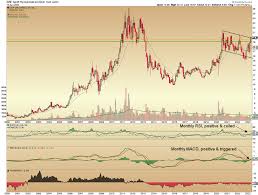Riding the Waves: A Deep Dive into the Latest Gold Market Trends
Gold has long been considered a safe haven asset, attracting investors during times of economic uncertainty and market volatility. Its value is influenced by a myriad of factors, including geopolitical events, economic indicators, and market sentiment. This monthly gold market analysis provides a comprehensive overview of the recent trends, key drivers, and future outlook for gold.
Recent Trends in the Gold Market
1. Price Movements:
- Monthly Performance: Over the past month, gold prices have shown a slight upward trend, reflecting increased demand amid market volatility. As of the end of the month, gold was trading at approximately $1,950 per ounce, up from $1,925 at the beginning of the month.
- Volatility: Gold prices experienced moderate volatility, fluctuating between $1,900 and $1,975 per ounce. This range was driven by economic data releases and geopolitical developments.
2. Demand and Supply Dynamics:
- Physical Demand: Physical gold demand, particularly in key markets like India and China, has remained robust. Seasonal factors, such as wedding seasons in India, have contributed to sustained demand.
- Investment Demand: Investment in gold-backed exchange-traded funds (ETFs) and other gold-related financial products has seen a steady increase. Investors are seeking refuge in gold amid concerns over inflation and economic slowdown.
3. Central Bank Activity:
- Purchases: Central banks, particularly in emerging markets, have continued to add to their gold reserves. Countries like Russia, China, and Turkey have been notable buyers, aiming to diversify their foreign exchange reserves.
- Sales: There have been minimal sales by central banks, indicating a general trend towards accumulation rather than liquidation of gold reserves.
Key Drivers of Gold Prices
1. Inflation Concerns:
- Rising inflation rates globally have bolstered gold’s appeal as a hedge against inflation. Investors are turning to gold to preserve purchasing power as fiat currencies face devaluation pressures.
2. Geopolitical Uncertainty:
- Ongoing geopolitical tensions, particularly in Eastern Europe and the Middle East, have increased demand for safe-haven assets like gold. Uncertainty around these conflicts has made gold an attractive investment.
3. Interest Rates:
- Central banks’ monetary policies, especially in the US and Eurozone, significantly impact gold prices. Recent signals from the Federal Reserve about potential interest rate hikes have created mixed sentiment in the gold market. Higher interest rates can dampen gold’s appeal by increasing the opportunity cost of holding non-yielding assets.
4. Currency Fluctuations:
- The US dollar’s performance plays a critical role in gold pricing. A weaker dollar typically makes gold cheaper for foreign buyers, boosting demand. Over the past month, the dollar index has shown some weakness, supporting gold prices.
Market Sentiment and Speculative Activity
1. Investor Sentiment:
- Market sentiment towards gold remains positive, driven by economic uncertainties and inflationary pressures. Surveys and sentiment indicators suggest that a significant portion of investors are bullish on gold’s prospects in the near term.
2. Speculative Positioning:
- Data from commodity exchanges indicate that speculative positions in gold futures and options have increased. Hedge funds and other large speculators are betting on further price increases, reflecting bullish sentiment.
Future Outlook
1. Economic Indicators to Watch:
- Inflation Reports: Continued monitoring of inflation data will be crucial. Persistent high inflation could drive further investment into gold.
- Central Bank Policies: Announcements and policy decisions from major central banks, particularly the Federal Reserve, will be pivotal. Clarity on interest rate trajectories will influence gold’s short-term price movements.
2. Geopolitical Developments:
- Geopolitical stability or escalation in key regions will impact safe-haven demand for gold. Investors should stay informed about developments in Eastern Europe, the Middle East, and trade relations between major economies.
3. Seasonal Trends:
- Seasonal demand, particularly in major gold-consuming countries, will play a role. The Indian festival and wedding season, as well as Chinese New Year, are typically periods of heightened gold demand.
4. Technological and Market Innovations:
- Innovations in financial products related to gold, such as digital gold and blockchain-based trading platforms, could attract a new segment of investors. The evolution of these products should be watched closely.
Conclusion
The gold market continues to be shaped by a complex interplay of economic indicators, geopolitical events, and market sentiment. Over the past month, gold has shown resilience, supported by inflation concerns and geopolitical uncertainties. Looking ahead, investors should stay attuned to key economic data, central bank policies, and geopolitical developments. With its status as a safe-haven asset, gold is likely to remain a critical component of diversified investment portfolios, providing stability amid ongoing global uncertainties.
By staying informed and understanding the factors influencing gold prices, investors can better navigate the market and make strategic decisions to capitalize on gold’s enduring value.







